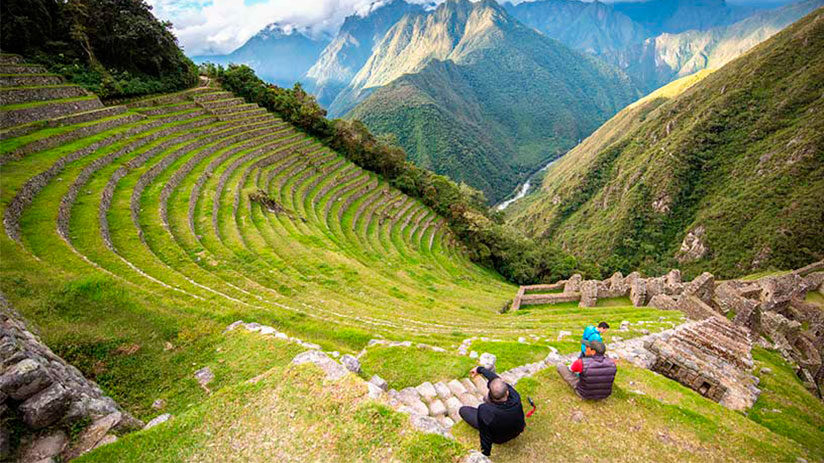Wiñay Wayna (11811 feet) is an ancient Inca town located on a forested slope, 5 kilometers from Machu Picchu southeast, over the Inca Trail’s final leg. It has Andean terraces, rooms, and ceremonial temples. Its function is a mystery, perhaps an administrative center, a spiritual center, or a food warehouse. Also, Wiñay Wayna could be considered a kind of time travel, due to its high degree of conservation of its structures, like Machu Picchu (The Spanish conquerors never found it) Therefore, together with Machu Travel Peru experts, we want to tell you everything about this mystery and wonderful site, still visited by very few people.
Everything you need to know about the wonderful Wiñay Wayna ruins
- Wiñay Wayna, always young
- Location of the Incas town
- Wiñay Wayna history
- Purpose and function of the site
- Structure of Wiñay Wayna
- Do I need an entrance for Wiñay Wayna?
- How to get there?
- Best time to visit Wiñay Wayna
- How to visit it?
- Recommendations before visiting
Wiñay Wayna, always young
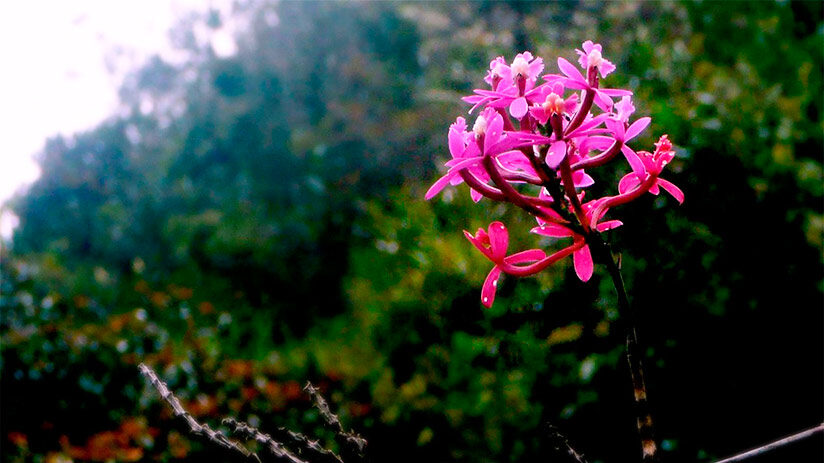
The name Wiñay Wayna translates to “always young” due to the local name of numerous orchids (Epidendrum Secundum) that abound in the surroundings. But, this name was given by the famous Peruvian anthropologist Julio C. Tello in 1942, after developing some research in the zone, since the original name (in Quechua language) of the complex is unknown. It is due to Wiñay Wayna never being found by the Spanish conquerors and, consequently, any chronicler arrived at the zone to describe with detail the utility of the complex or its real name. Unfortunately, the oral tradition does not provide more information about the place, let us remember that the Incas did not leave any writing system. However, if you visit the place, you’ll find these beautiful orchids around the place, without mentioning the own beauty of the Incas town.
Location of the Incas town
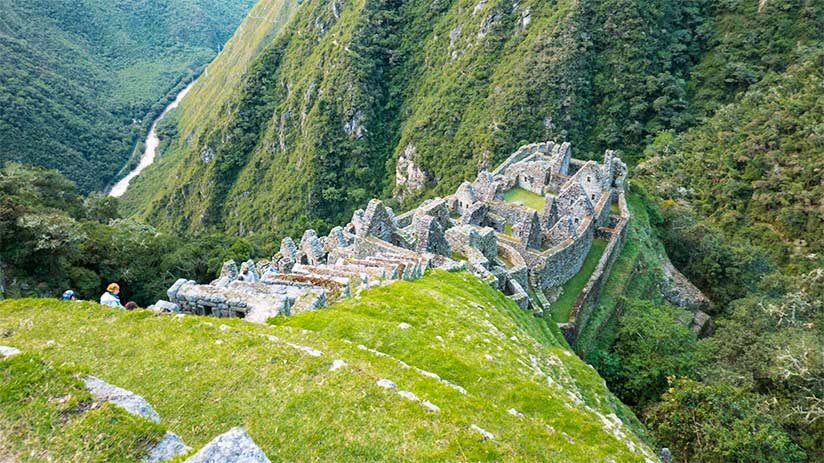
Despite being close to Machu Picchu, on the Classic Inca Trail that gets to the world wonder, Wiñay Wayna is very little crowded with visitors or tourists. To be more precise, Wiñay Wayna is located 5 kilometers to the Southeast of Machu Picchu, between the archaeological ruins of Phuyupatamarca and the Inca Sun Gate previous to Machu Picchu called Inti Punku. The site is located at 11811 feet, in a cloud forest, with mist constantly moving in and out. One of the main characteristics of the place is that the slopes of the mountains claim a powerful green where you can appreciate the nature of the zone, Jungle eyebrow. As we mentioned previously, Wiñay Wayna is located in the last stretch of the Inca Trail to get to Machu Picchu, and it is an unmissable point to visit among your Machu Picchu tours options.
Wiñay Wayna history
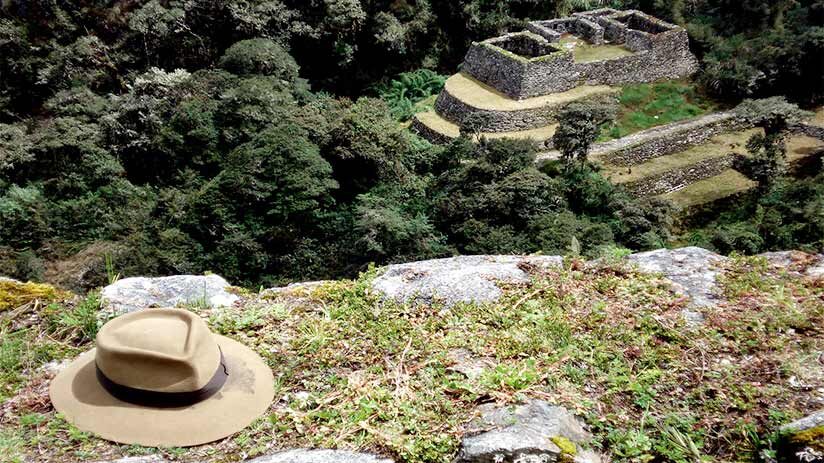
The Wiñay Wayna ruins are an incredible archaeological site belonging to the time of Pachacutec Inca. The ruins were built under the orders of the famous Inca and date from the middle of the XV century. It is the last stop offered by the well-known Classic Inca Trail, before getting to Machu Picchu, and remained hidden for a long time. Let us remember that Machu Picchu was discovered in 1902 by the Cusco agriculture Agustín Lizarraga and made known to the entire world in 1911 by Hiram Bingham. Well, Wiñay Wayna was discovered between 1940 – 1942 by Wenner Gren’s scientific expedition, led by Paul Fejos (An ex-film director turned Empirical Anthropologist). Since those years, many types of research were developed in the zone, one of the first ones was headed by the famous Peruvian archaeologist Julio C. Tello, who give it its current name.
Purpose and function of the site
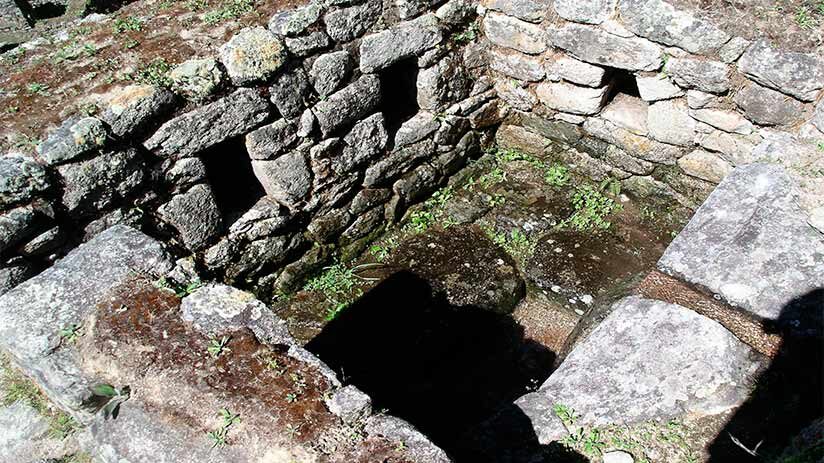
Nowadays, the true purpose of Wiñay Wayna is unknown. But, Why? Let’s remember that the site was hidden and close to Machu Picchu, another attraction beyond the reach of the Spanish conquerors.
Among the few positive aspects that the European invaders brought, were the chroniclers. They described in great detail everything they saw when entering Cusco and other Tawantinsuyo zones, but they never got to Cusco Jungle areas, like Machu Picchu and Wiñay Wayna. Also, taking into consideration that the Incas didn’t have a writing system and all their customs and knowledge were transmitted through oral tradition, we don’t, have enough information (or the correct one) about the place. Instead, we have the hypothesis of recognized scholars:
- Spiritual destination: It is believed that Wiñay Wayna was a kind of spiritual destination or resting place before reaching Machu Picchu. A place where Inca royalty or elders of higher rank could rest before reaching the Wonder of the World. The water ceremonial sources found in the place support this theory. The Incas believed strongly in spiritual clean through water ceremonial fonts, where the Inca or any high dignitary rested while an assistant threw small streams of water at them, over the head.
- Administrative center: Other theories claim that the site functioned as a kind of administrative center. If you look at an Inca Trail map, this theory tends to gain momentum to see the structures of buildings that form Wiñay Wayna. So, it can be assumed that the enclosures were warehouses for the different surrounding crops. It is believed that the administrative work consisted of keeping track of the amount of food, potatoes, corn, coca leaves, quinoa, and other crops stored on site.
- Food warehouses: Or Tambos (In the Quechua language) More than an administrative center, Wiñay Wayna was a food warehouse used to store different products harvested near the place, like quinoa, coca leaves, different kinds of potatoes, corn, and even dried meat, according to this theory. The Inca government distributed these foods, at certain times, to surrounding areas of Machu Picchu like Sayaqmarca, Intipata, Conchamarca, and Phuyupatamarca, as a form of subsidy to its subjects.
As you can see, the purpose is not entirely clear, but the site remains a wonderful archaeological complex. So being able to visit Wiñay Wayna is truly a unique experience. Do not miss this opportunity to know a wonderful Inca archaeological complex without many people!
Structure of Wiñay Wayna
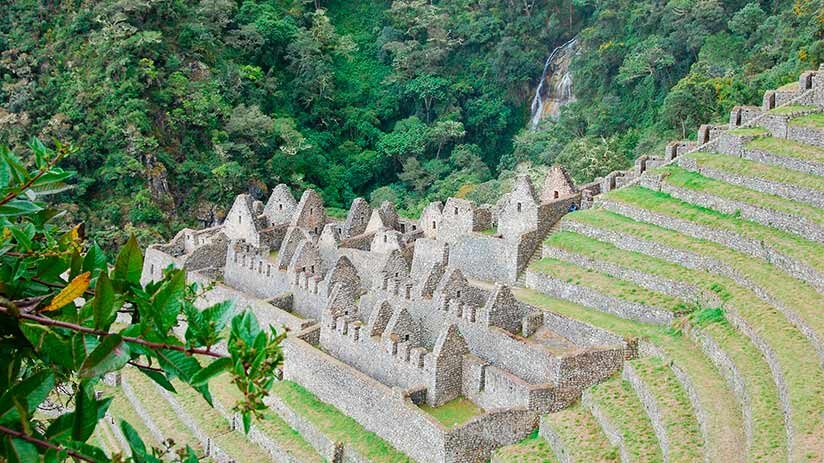
The Wiñay Wayna ruins boast a wonderful architectural, agricultural, and religious style. Even its architecture is quite similar to that of Machu Picchu, with its buildings constructed of monolithic granite. The complete structure is formed by 20 urban areas distributed on two platforms, each one following the classic distribution of Incas buildings called Kanchas. One platform is located on top of the other and both are separated by 16 Inca terraces, with a stone stair and a water channel that connects them. Both above the upper platform and below the lower platform are other Andean terraces. Each platform is formed by temples, religious rooms, ceremonial water fountains, and the 7-windows temple (The reason why it is believed that the complex was dedicated to the god Rainbow or Cuychi in the Quechua language, seven colors)
One of the Machu Picchu facts surrounding the place is the evidence that its structure follows the Inca worldview. Which is adapting the different constructions to the natural environment, just as it happens in Machu Picchu. The site is attached to the side of a mountain, being modified for Andean terraces that were used for the different agricultural activities that took part in the place. For this reason, to appreciate the true beauty that the place emanates, it is necessary to see it on your own.
Do I need an entrance for Wiñay Wayna?
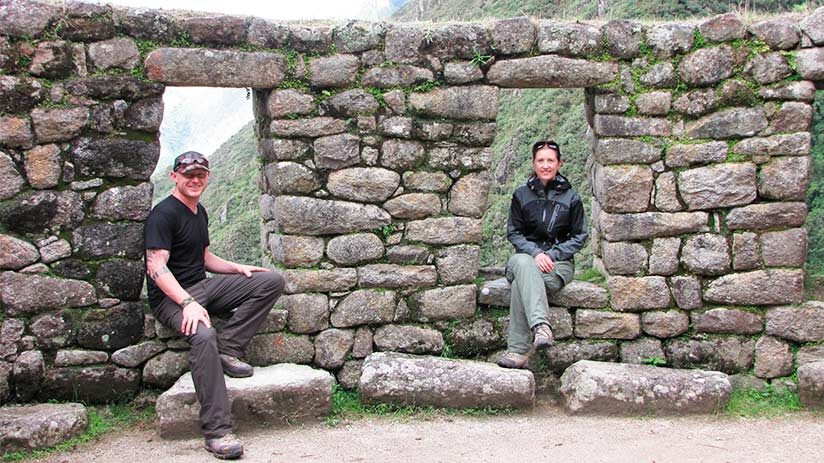
Remember that Wiñay Wayna is located in the last stretch of the famous Inca Trail, just 5 kilometers before getting to Machu Picchu. In other words, Wiñay Wayna is part of the “Inca Trail” Tourist hike route. Therefore, to get to Wiñay Wayna, first, you have to book your Inca Trail entrance and complete the hiking of the Classic Inca trail for 4 days and 3 nights (beginning from kilometer 84 of the train rails Cusco – Machu Picchu) or completing the Short Inca trail of 1 day, beginning from kilometer 104 of train rails Cusco – Machu Picchu. But in all forms, first, you have to get your Inca Trail entrance.
The Inca Trail route has high demand every year. The availability of entrances per day is only 500 (in accordance with the recommendation of an impact and erosion study over the Inca Trail made by the Peruvian government). In this sense, this ticket quantity (500) is destined not only for tourists, but also for travel agency personnel like cookers, porters, guides, and assistants among others. So, you can imagine the real quantity of tickets available only for visitors. Saying all these, booking Inca Trail tickets 6 or 7 months in advance will be an obligation and the best recommendation if you want to enjoy the Wiñay Wayna charm without inconvenience.
During the entire hiking route, you will be accompanied by a professional guide and other companions who will help you get to this incredible and beautiful place. Because according to Culture Minister (Peruvian government office who manages the Inca Trail), buying the Inca Trail tickets directly or hiking the Inca trail by yourself is forbidden. The purchase of the Inca Trail entrances has to be through an authorized and official tour operator, consequently, the service of a tour guide is included.
How to get there?
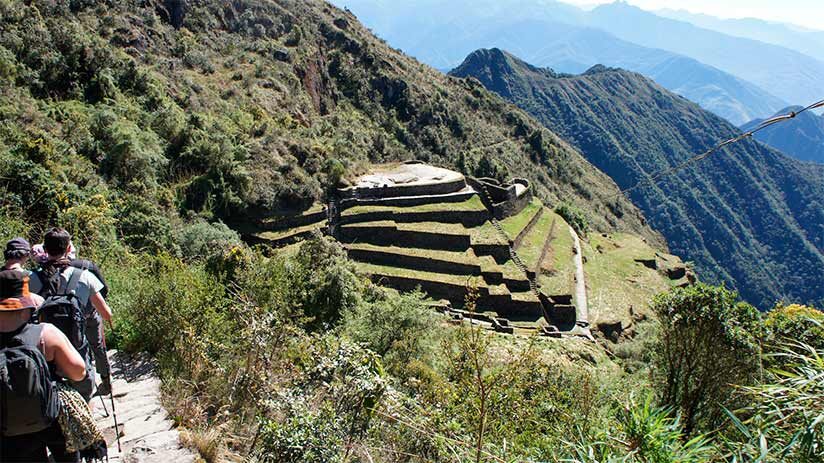
- Classic Inca Trail of 4 days: (From km 84 of the train rail to Machu Picchu) If you opt for the Classic Inca Trail, the trip will last for about 3 days until you reach Wiñay Wayna. The route to get there is the same as that of the Inca Trail. The road to the ruins offers possibilities to visit numerous natural landscapes and traditional communities. Cusichaca, Huayllabamba, and Chachabamba are some of the communities that you should not overlook.
- Inca Trail of one day: (From km 104 of the train rail to Machu Picchu), the path has a relative inclination where you will have to climb for 03 hours to get to the famous Wiñay Wayna ruins. Make this route useful if you want to enjoy the flora and natural landscapes surrounding Wiñay Wayna. This is located just 3 miles (4.8 kilometers) from Machu Picchu. The site is a short walk from the main camps and is accessible during most of the day.
- From Aguas Calientes Town: Aguas Calientes or Machu Picchu town (The local town located over the bottom of Machu Picchu mountain) offers one of the Inca Trail alternatives to get Wiñay Wayna and the famous citadel. You only have to follow the train rail until kilometer 104 and, from this point, make the route of the Inca Trail for one day.
Best time to visit Wiñay Wayna
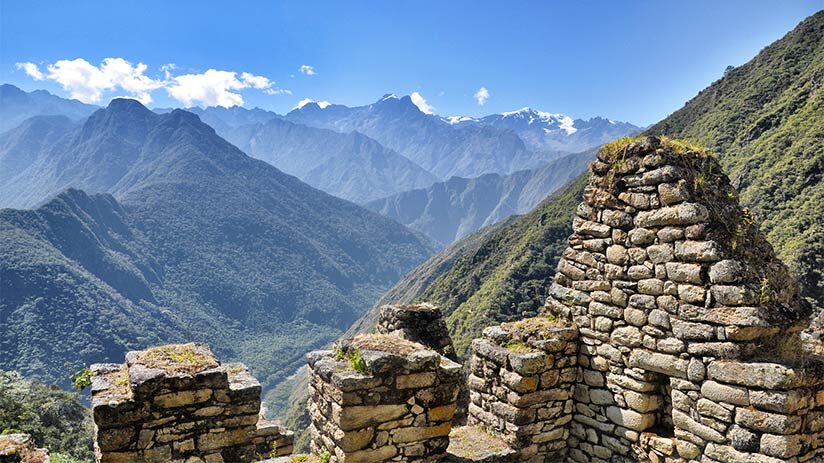
The climate of the site will depend a lot on the time in which you travel. But in general, you can expect hot and humid weather. Being much sunnier during the day and cool at night.
- Rainy season: The rainy seasons are from December to March. If you decide to visit Wiñay Wayna this season, you will find rain (obviously), high humidity, cloudscapes (if you want to take photos), and a muddy and slippery path. The positive aspect is the low number of visitants and the possibility of having the archaeological town completely for you.
- Dry season: From September to April. If you decide to visit the zone during this season, you will not have bothersome rains during your tour, you will find a clear sky, warm temperatures, dry path, and perfect illumination for your photos. But, keep in mind that the dry season coincides with the high tourist season, so the Inca Trail cost can be influenced and the number of visitors will be high.
In any case, take into consideration that the Inca Trail is closed in February of each year to be maintained and reconditioned.
How to visit it?
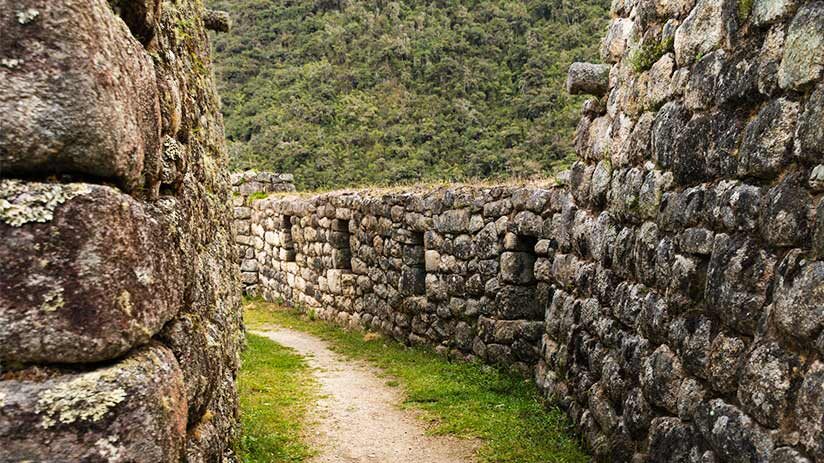
Wiñay Wayna is the third camping point within the Inca Trail, and it is located about 3680 meters above sea level. The interesting thing about this site is that it is located about 4 kilometers from the Inti Punku or Sun Gate in Machu Picchu. So, the site is the last resting point before knowing the Inca citadel. The tour of the complex is offered together with a guided tour where you will explore the archaeological complex in all its splendor. You will be able to appreciate numerous views of the Valley below, along with the Urubamba River surrounding the different mountains. In addition, you will enjoy a very particular subtropical climate. After you tour the site, you will camp nearby to rest for the day.
If you are going to choose to visit the citadel, the Inca Trail to Machu Picchu is the best way to appreciate the different landscapes of the Andes Mountains. The hiking route through the ruins will let you climb the mountain, allowing you to explore the entire archaeological complex. Dare to enjoy the beautiful subtropical climate and the exceptional views of the Valley. You will have several opportunities to take photos of the amazing Wiñay Wayna site and much more.
Recommendations before visiting
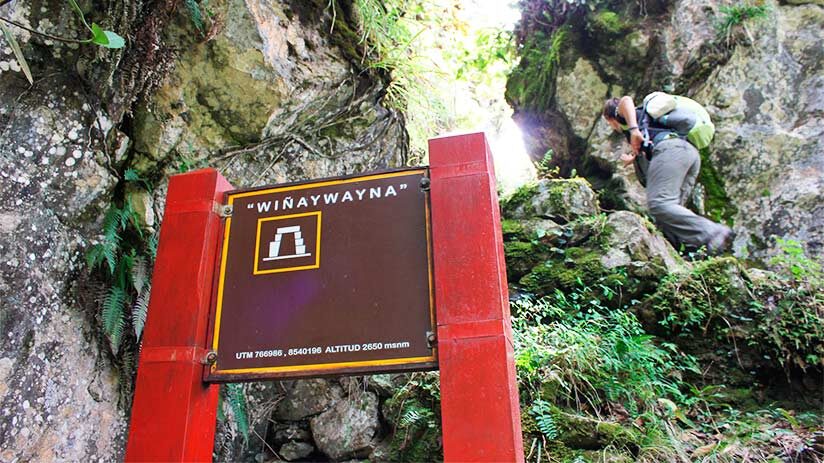
If you want to visit Wiñay Wayna, you must book at least 6 months in advance of your route tickets. It is also good to be physically prepared for the hiking route. Even if it is not a very difficult trail, one of the things that affect the most is the height at which you will find yourself. Therefore, try to acclimatize for a few days in Cusco or the Sacred Valley. Or you can also choose to take pills against altitude sickness, known as Soroche in Peru. These pills can be obtained in any pharmacy or drug store in the country, and it is ideal in case you do not have so much time available.
“YOU KNOW MORE OF A ROAD BY HAVING TRAVELED IT THAN BY ALL THE CONJECTURES AND DESCRIPTIONS IN THE WORLD”
As you can see, the Wiñay Wayna ruins are some of the best Inca ruins to enjoy during your tour of the majestic Inca Trail. But it is not the only one. So if you choose to enjoy this route, you will know much more than Wiñay Wayna. We hope together with Machu Travel Peru to have inspired you for your next visit. You can consult our advisers for more information about the Inca Trail. What are you waiting for to start organizing the trip of your dreams? Don’t miss out on this magical opportunity.
